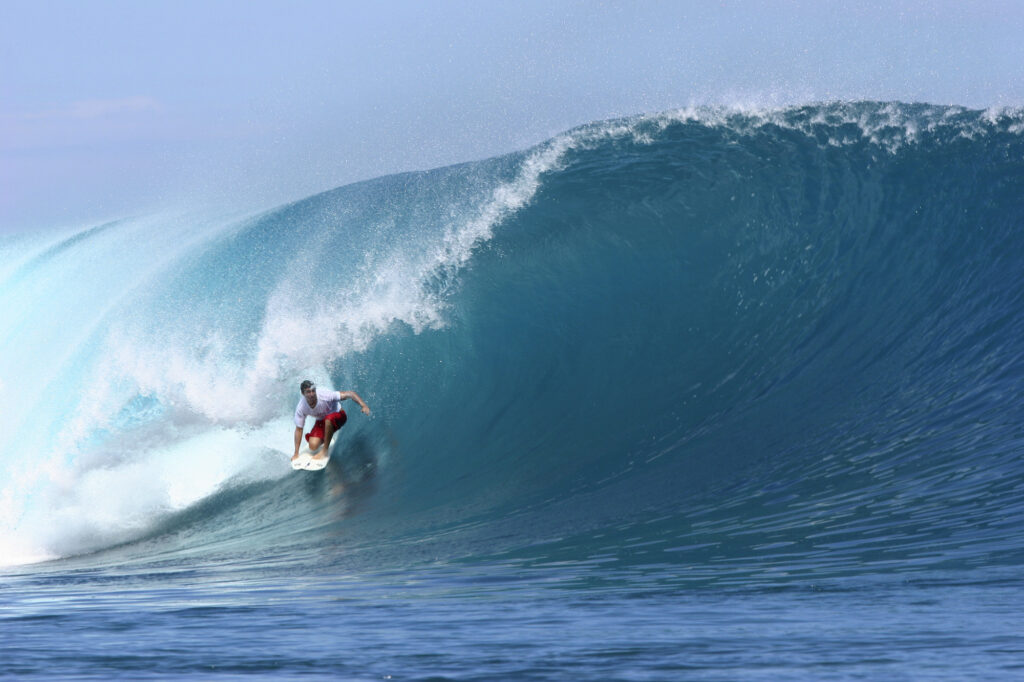CAMARILLO — About 76% of the ocean areas rich in biodiversity also contain great places to surf—which presents the opportunity for the conservation community to mobilize a global tribe of surfers who want to protect these areas as much as they do.
That’s the bottom line of a study conducted in part by CSU Channel Islands (CSUCI) Assistant Professor of Environmental Science & Resource Management (ESRM) Dan Reineman, Ph.D. with the Save the Waves Coalition and Conservation International. The two organizations merged to form the Surf Conservation Partnership.
For the study, Reineman and his co-investigators from the Surf Conservation Partnership examined 3,700 surf locations around the world, provided by the global surf forecasting company Surfline Inc, and cross-matched them to areas with biologically diverse marine and coastal ecosystems. Many surf breaks were located in key areas of biodiversity and most were not protected from activities that could damage them.
“We found that of many thousands of surf breaks around the world, more than a quarter are not only in or near important biodiversity areas, but are not currently in marine protected areas,” Reineman said. “So, protecting these surf breaks could have a biodiversity benefit, too—and vice versa.”
The Surf Conservation Partnership aims to use this research to encourage local, regional and national conservation groups to protect surf breaks that overlap with key biodiversity areas.
“The need to implement ocean conservation has never been greater,” said Jack Kittinger, Ph.D., Senior Director of the Global Fisheries and Aquaculture program of Conservation International.
“Mobilizing the 32 million people around the world who surf could have a major impact on how we protect vital ocean ecosystems.”
The study involved a comparison of three different global databases: one with all of the areas of the ocean that are protected from activities like drilling and commercial fishing; another with all of the key areas of biodiversity; and a third with Surfline’s map of the world’s most desirable surf spots.
“These results give conservation organizations another tool for their toolbox,” Reineman explained. “Instead of just focusing on biodiversity protection for its own sake, they can also focus on surf break protection—and use the culturally and economically significant sport of surfing to increase protections for biodiversity, also.”
The idea to formally research surfing spots and where they overlapped with critical areas of biodiversity arose from a project conducted by Save the Waves years ago.
“We looked at the top 50 surf spots in the world and how they overlapped with biodiversity hot spots,” said Save the Waves CEO Nik Strong-Cvetich. “We gathered anecdotal data and found out there was about a 76% overlap between top surfing spots and biodiversity hot spots.”
The next step will be to get the word out and encourage various organizations in different parts of the U.S. and the globe to protect surf breaks that are situated within critical ocean ecosystems. For the first time in history, the Summer Olympics in Japan will feature surfing, which presents an ideal opportunity, Kittinger said.
“Surfing is going to be center stage and this scientific analysis of where surfing and biodiversity align and will help us direct our efforts where they can have the most impact,” Kittinger said.
For more, visit: https://www.conservation.org/priorities/the-surf-conservation-partnership.
About California State University Channel Islands — CSU Channel Islands (CSUCI) is reimagining higher education for a new generation and era. We are an innovative higher education institution that enables students to succeed and thrive – serving as an engine for social and economic vitality that provides the intellectual resources necessary for a thriving democracy. With more than 7,000 students, 1,200 employees and 14,000 alumni, CSUCI is poised to grow in size and distinction, while maintaining one of the most student-focused learning environments in public higher education. Connect with and learn more by visiting www.csuci.edu or CSUCI’s Social Media.

